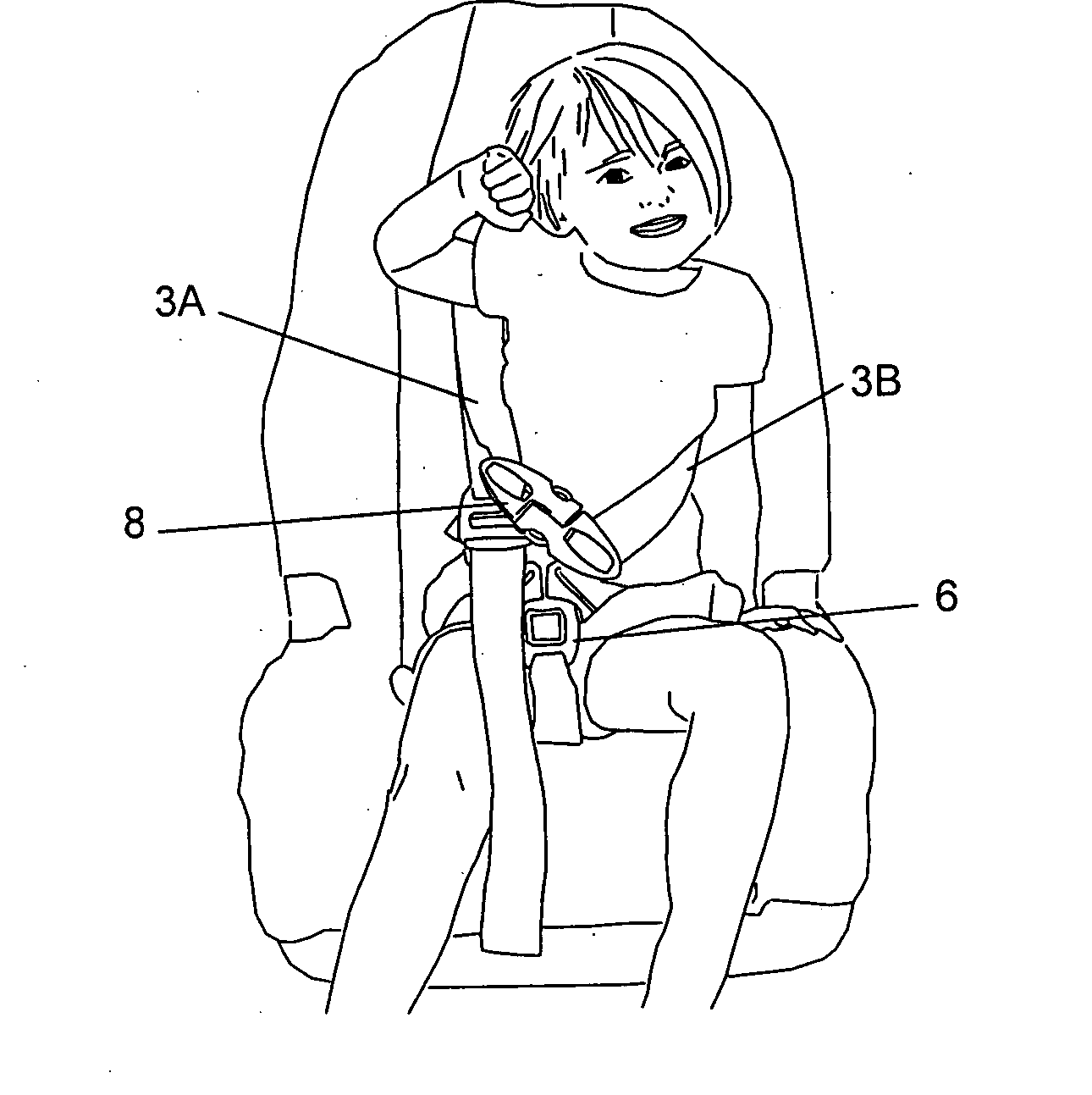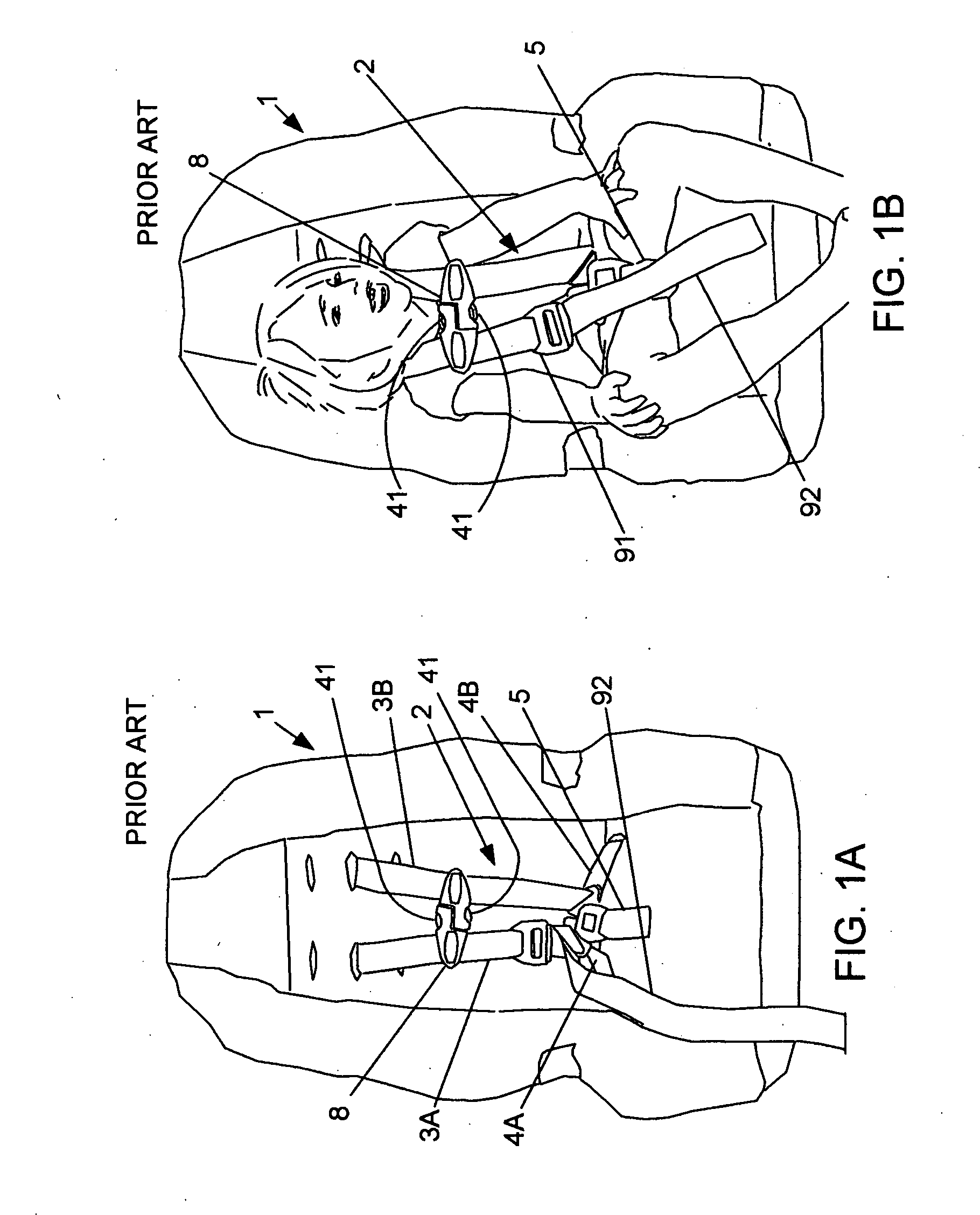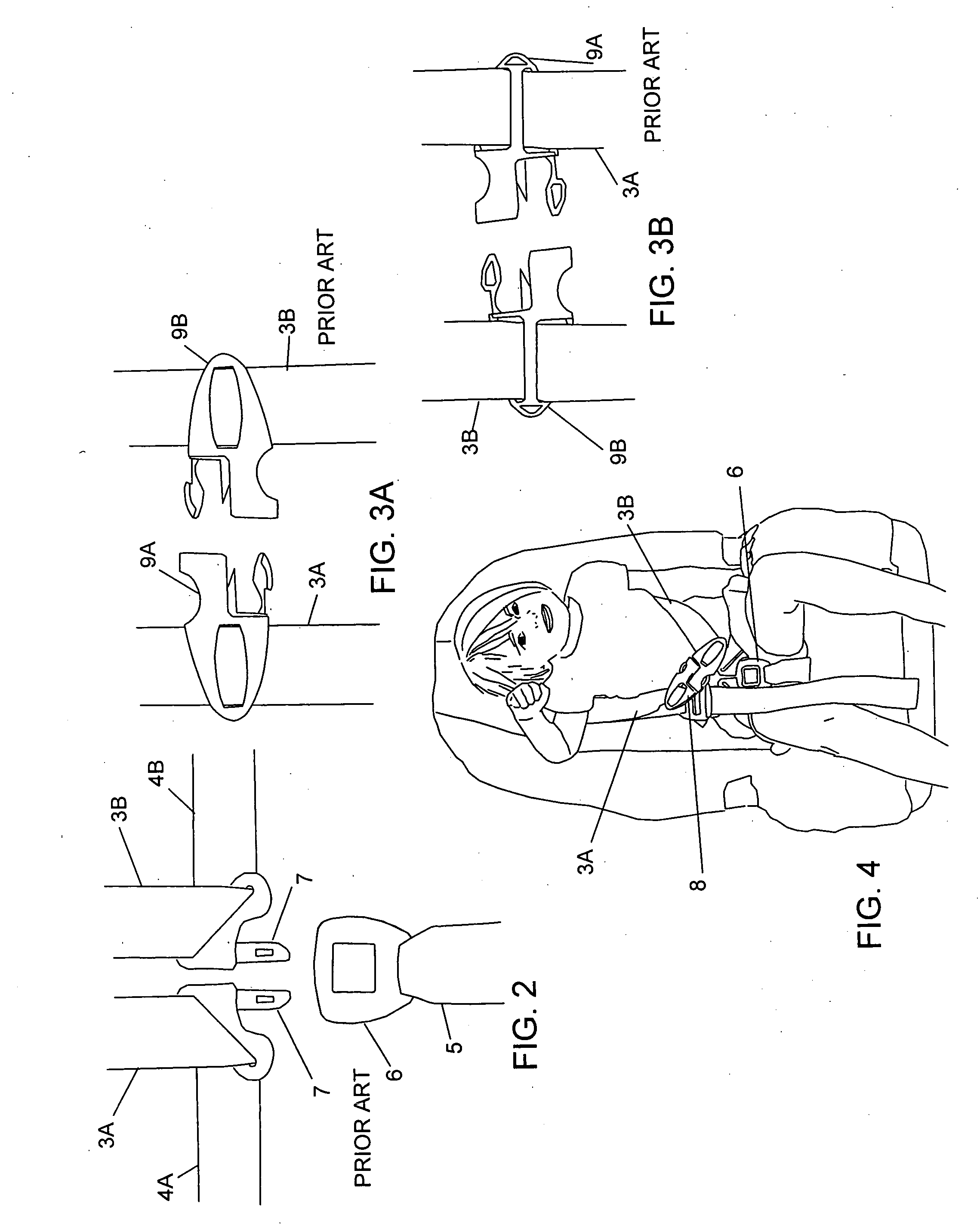Restraint safety device
a technology of safety device and strap, which is applied in the direction of safety belt, child seat, pedestrian/occupant safety arrangement, etc., to achieve the effect of preventing or limiting the sliding of the chest clip
- Summary
- Abstract
- Description
- Claims
- Application Information
AI Technical Summary
Benefits of technology
Problems solved by technology
Method used
Image
Examples
Embodiment Construction
A Problem
[0025]FIG. 4 illustrates a dangerous problem associated with prior art child car seats, which was discovered by one of the Applicants.
[0026] In FIG. 4, the child has grabbed chest clip 8 and has slid it down shoulder straps 3A and 3B so that it is no longer appropriately positioned over the child's chest, but instead is near buckle 6. The act of sliding chest clip 8 down shoulder straps 4 puts the child in a position of increased danger. For example, the child has wiggled her shoulders so that her upper body is no longer covered by shoulder straps 3A and 3B. At this point, if the automobile is involved in an accident, the child could potentially suffer head and / or neck injuries, which may include skull fractures, broken neck and jaw fractures, as well as injuries resulting from what is known as “Seat Belt Syndrome”. Seat Belt Syndrome has been characterized as a collection of injuries specifically resulting from passengers who were only wearing lap belts upon the impact of...
PUM
 Login to View More
Login to View More Abstract
Description
Claims
Application Information
 Login to View More
Login to View More - R&D
- Intellectual Property
- Life Sciences
- Materials
- Tech Scout
- Unparalleled Data Quality
- Higher Quality Content
- 60% Fewer Hallucinations
Browse by: Latest US Patents, China's latest patents, Technical Efficacy Thesaurus, Application Domain, Technology Topic, Popular Technical Reports.
© 2025 PatSnap. All rights reserved.Legal|Privacy policy|Modern Slavery Act Transparency Statement|Sitemap|About US| Contact US: help@patsnap.com



